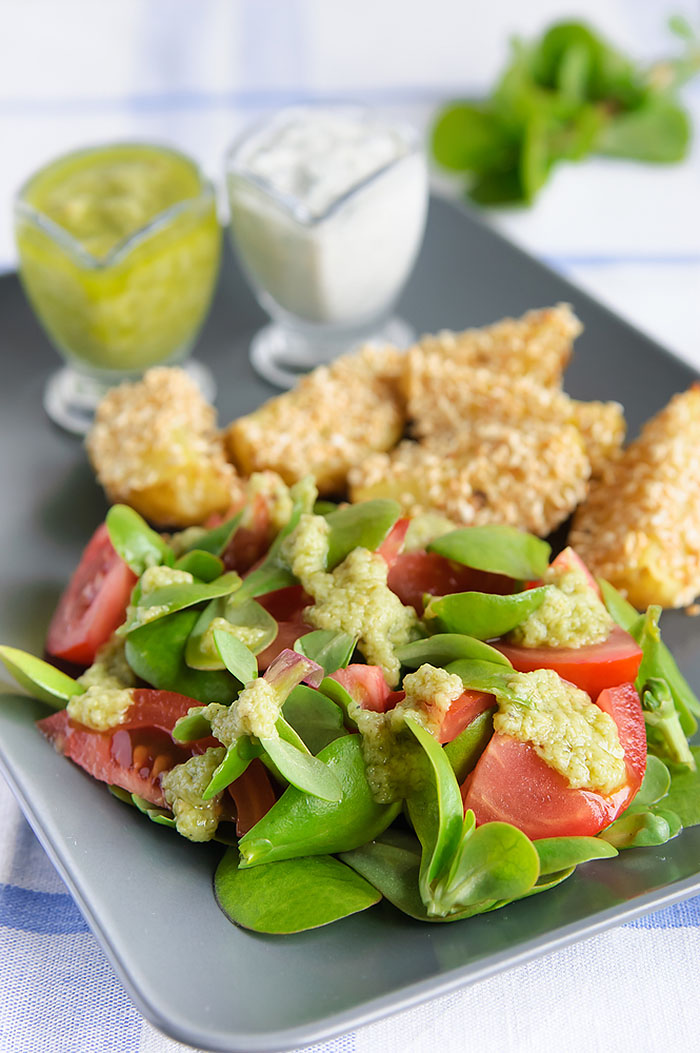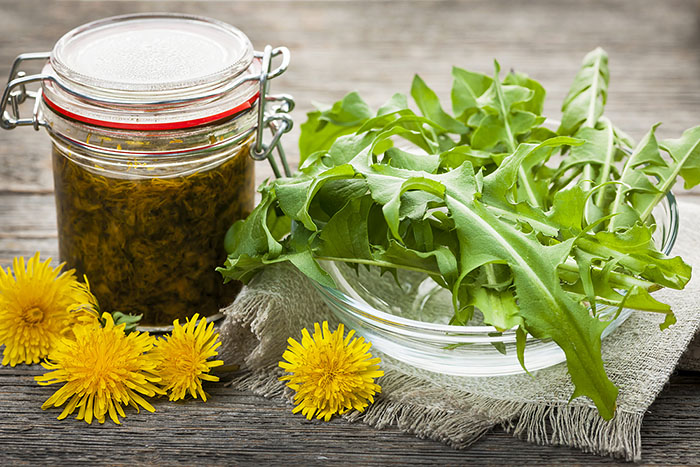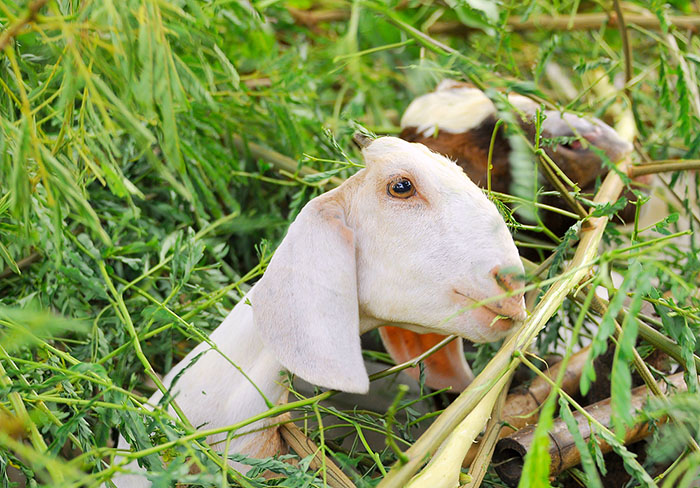Dining With the Enemy

Purslane with tomatoes, potatoes and sauces. PHOTO Katerina Belaya/Shutterstock
Invasivore – noun. One who eats invasive species.
Invasivory – verb. The practice of eating invasive species.
WE’VE PULLED, CHOPPED, SAWED, YANKED, BURNED and even poisoned them. Now people are trying another way to get rid of invasive plants – eating them. The movement is fueled by growing interest in more environmentally friendly consumer choices and sustainable, local eating.
Invasive plant and animal species cause billions of dollars in environmental and economic damage in the U.S. every year and represent a top threat to biodiversity and native habitats. They decrease property values and agricultural productivity and affect public utility operations, native fisheries, tourism, outdoor recreation and the overall health of ecosystems.
Can invasivory – eating the invaders – help? Well, yes and no.
Public awareness is a crucial weapon in combating invasions, and an eat-the-invaders movement could help build that awareness, says Invasive Species Advisory Committee member Damon Waitt, Ph.D. “The issue doesn’t get a lot of attention, and this is a nice hook to tell people how some organisms are bad for the environment.”
Texas Tech University associate professor Matthew Barnes, Ph.D. and colleagues established a website, invasivore.org, for that very reason. “We post an article about eating some bizarre species and that gets people into the website and then they explore more about the problem. The real power might be in those opportunities to prevent the next invasion.”

Foraged edible dandelion greens and flowers with jar of preserves. PHOTO Elena Elisseeva/Shutterstock
Eating invasive species can reduce their populations – studies have shown that targeted harvest has reduced numbers of invasive lionfish and their effects on coral reefs. People also have had a long history of eating or hunting species to extinction, Barnes points out, suggesting the possibility that we could control some invasives.
But there are no studies yet on whether consumption of invasive plants has reduced their abundance, according to Tom Kaye, Ph.D., executive director of the Institute for Applied Ecology, a nonprofit organization in Oregon that has staged invasive cook-offs to increase public awareness. He believes success greatly depends on the species. “For some species, I think it could be one of the tools used to reduce their abundance. But we mainly look at [eating invasives] as a way to bring people to the table – literally – to talk about it.”

Goats are being called upon to eat away at invasive species. PHOTO Vassamon Anansukkasem/Shutterstock
Don’t Want to Eat the Invaders Yourself? Let the Goats Do It!
Goats are an inexpensive and potentially effective tool for managing some invasive plants. For example, the Chattanooga, Tennessee, Public Works Department turned goats loose on city-owned land to nosh on kudzu. Unlike cattle, which are selective foragers, goats are famous as indiscriminate eaters and will even graze on poison ivy. You don’t have to own the goats, either; you can rent them from grazing services across the country through Livestock for Landscapes.
Experts say there are legitimate concerns about invasivory, including creating a market for a particular plant. “If an invasive plant is especially tasty and it becomes all the rage to eat it, suddenly its economic lure outweighs its environmental harm,” Waitt explains. Inevitably, some entrepreneur will tire of driving around collecting in the wild and opt to grow the plant.
That is why eating invaders must be seen as an education and awareness tool rather than a management tool, Barnes says. “Keep the central message that the reason to eat these species is control and eradication. The more local the effort, the more realistic your chances for success in reducing the population.”
There are risks to wild harvesting as well, including encountering toxic or poisonous plants. Plants along roadways may have been sprayed with chemicals or coated in automotive exhaust. Harvesters could inadvertently contribute to spread of an invasive by transporting it or scattering remains.
Assuming you avoid these potential problems, which invaders are good to eat?
Barnes calls dandelions and purslane gateway invaders: common plants familiar to many. Dandelion leaves can be put in salads, the flowers fried or used to make wine. Purslane, a succulent, is good in stir fry.
According to the Institute for Applied Ecology, garlic mustard is extremely nutritious. It and bastard cabbage, another member of the mustard family, have slightly spicy leaves good in salads or pesto sauce. Use Himalayan blackberries in any dish with berries, such as pies, cobblers and smoothies. After picking leaves or berries, pull up the entire plant if possible.
Several cookbooks feature kudzu, which grows as much as three feet per day under optimum conditions. The leaves can be eaten raw like spinach, chopped up and baked in quiches, cooked like collards, or deep fried. Young shoots taste like snow peas, and blossoms can be used to make jelly, syrup and wine. Dry the large potato-like roots – full of protein, iron and fiber – and grind into a powder used to coat fried foods or to thicken sauces.
Boil the shoots of invasive phragmites or sauté with butter and salt like asparagus. Consult a local naturalist or a field guide to distinguish the native from the invader.
Ready to do your part? Let’s eat.
Roasted Phragmites Rhizomes
12 Phragmites rhizomes (6-8 inches long). Wash thoroughly, bake in oven at 350 degrees F for 25 to 30 minutes. Tastes like baked potato skins.
Recipe from the Virginia Institute of Marine Science
Phragmites Gruel
1/2 cup seeds of Phragmites, 2 cups boiling water. Collect a dozen or so seed heads. Remove the seeds and crush. Add to boiling water. Cover and cook slowly until a thin, red-colored gruel forms. Cool and eat. Milk and maple syrup compliment the dish.
Recipe from “They’re Cooked: Recipes to Combat Invasive Species“
Sorrel Smoked Salmon Puffs
Ingredients:
1 bunch sorrel
1 lb. hot smoked salmon, flaked
1 lb. cream cheese, softened
60 mini cream puffs, split
Bring 1 gallon of salted water to a rolling boil. Blanch sorrel for a few seconds. Drain thoroughly. Combine wilted sorrel, salmon and cream cheese in a food processor fitted with the blade attachment. Pulse mixture until smooth. Correct as needed with lemon juice, hot sauce and/or salt. Pipe the filling into the puffs and chill.
Recipe by Chef Matt Bennett

